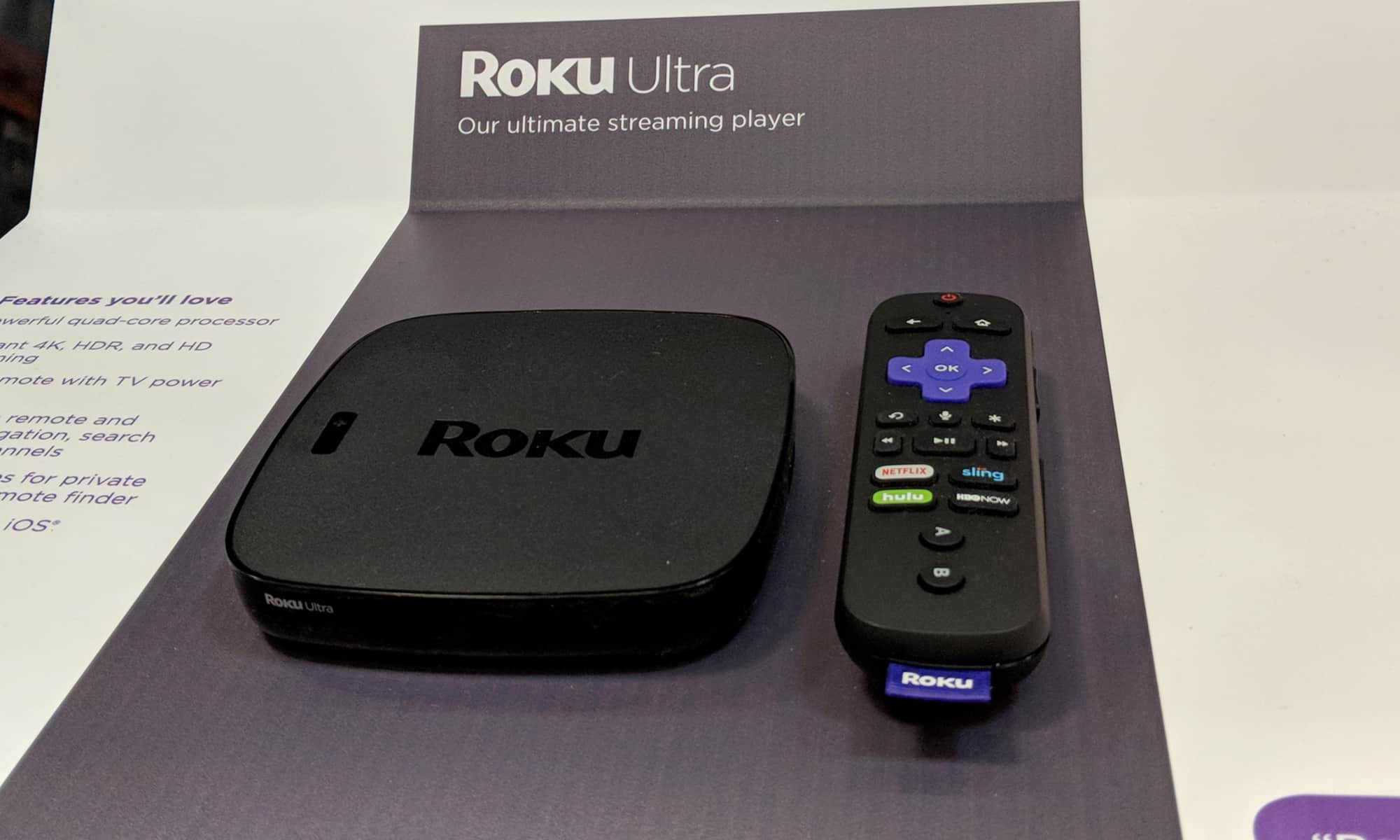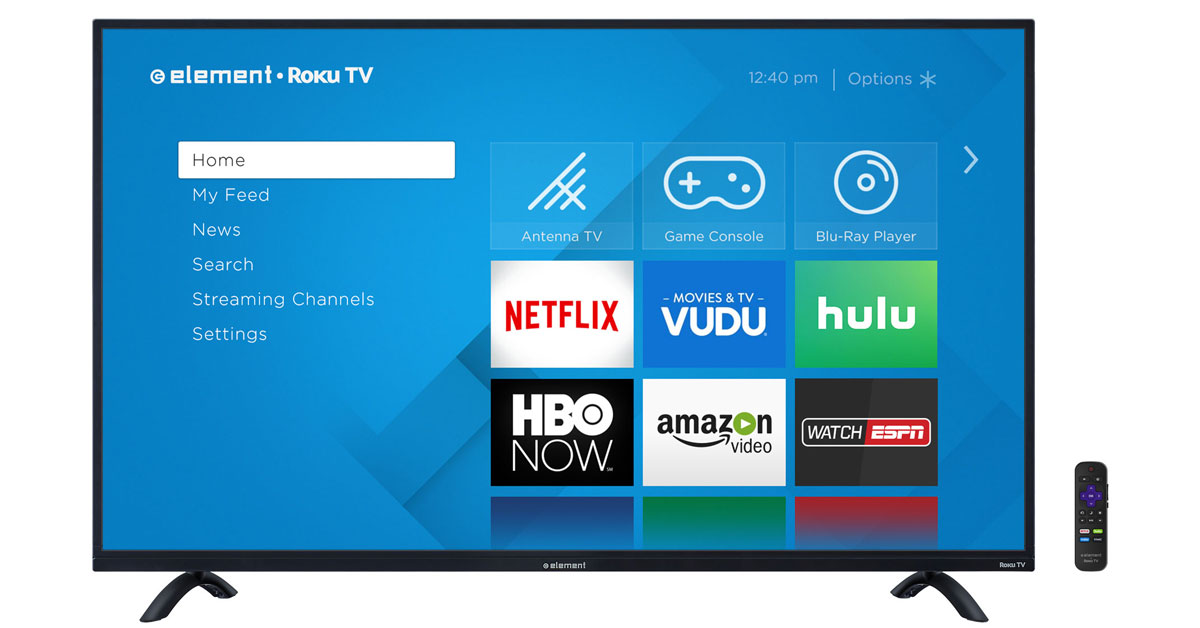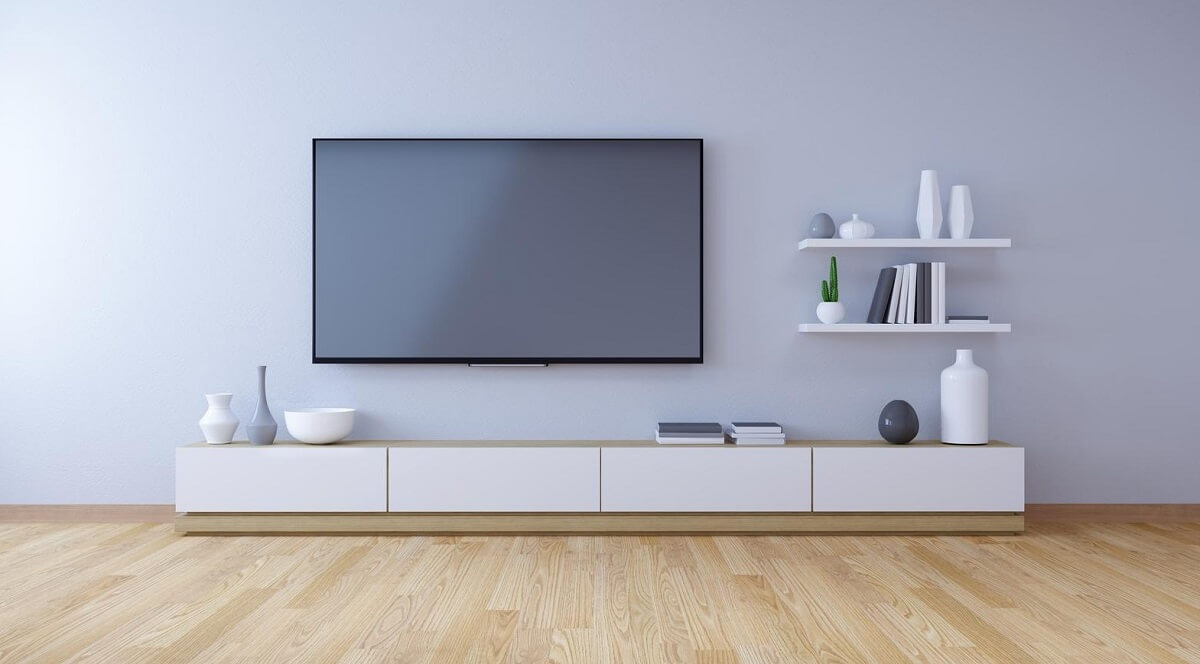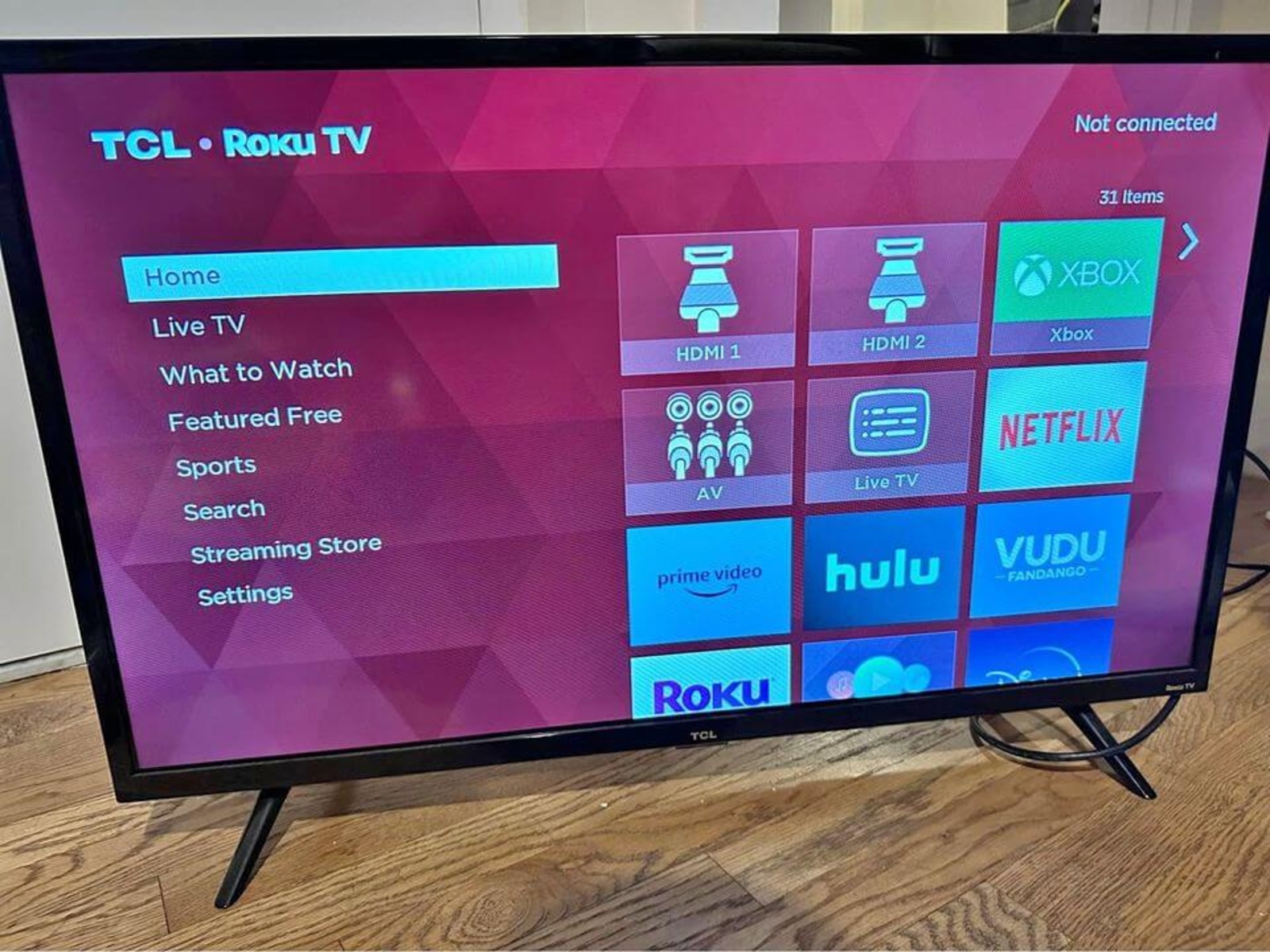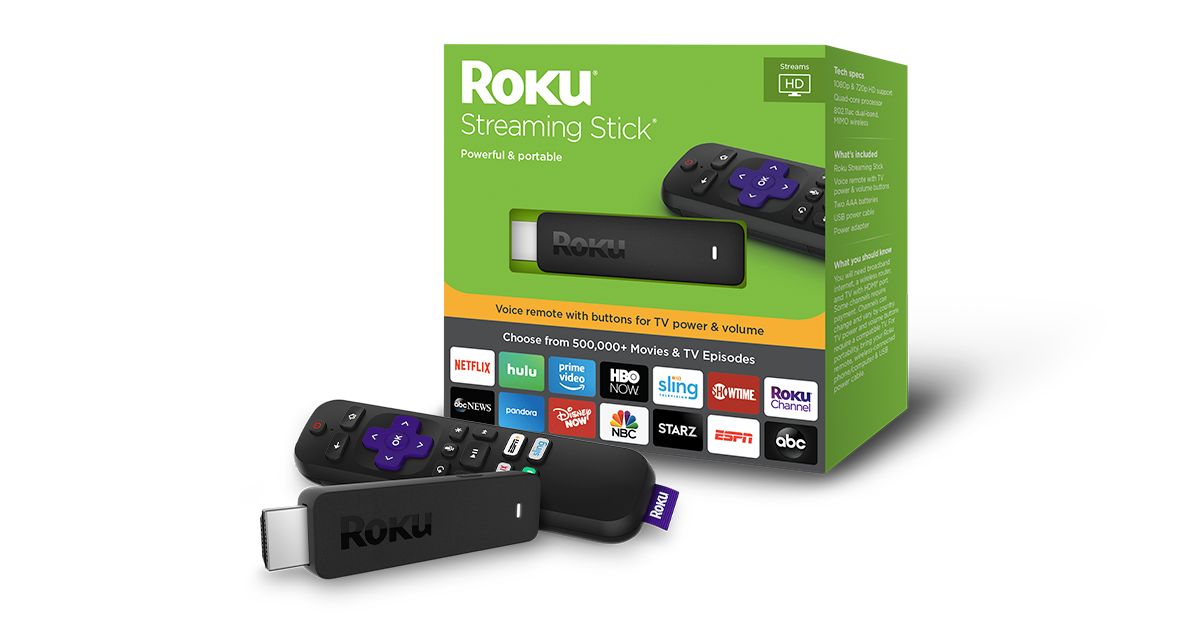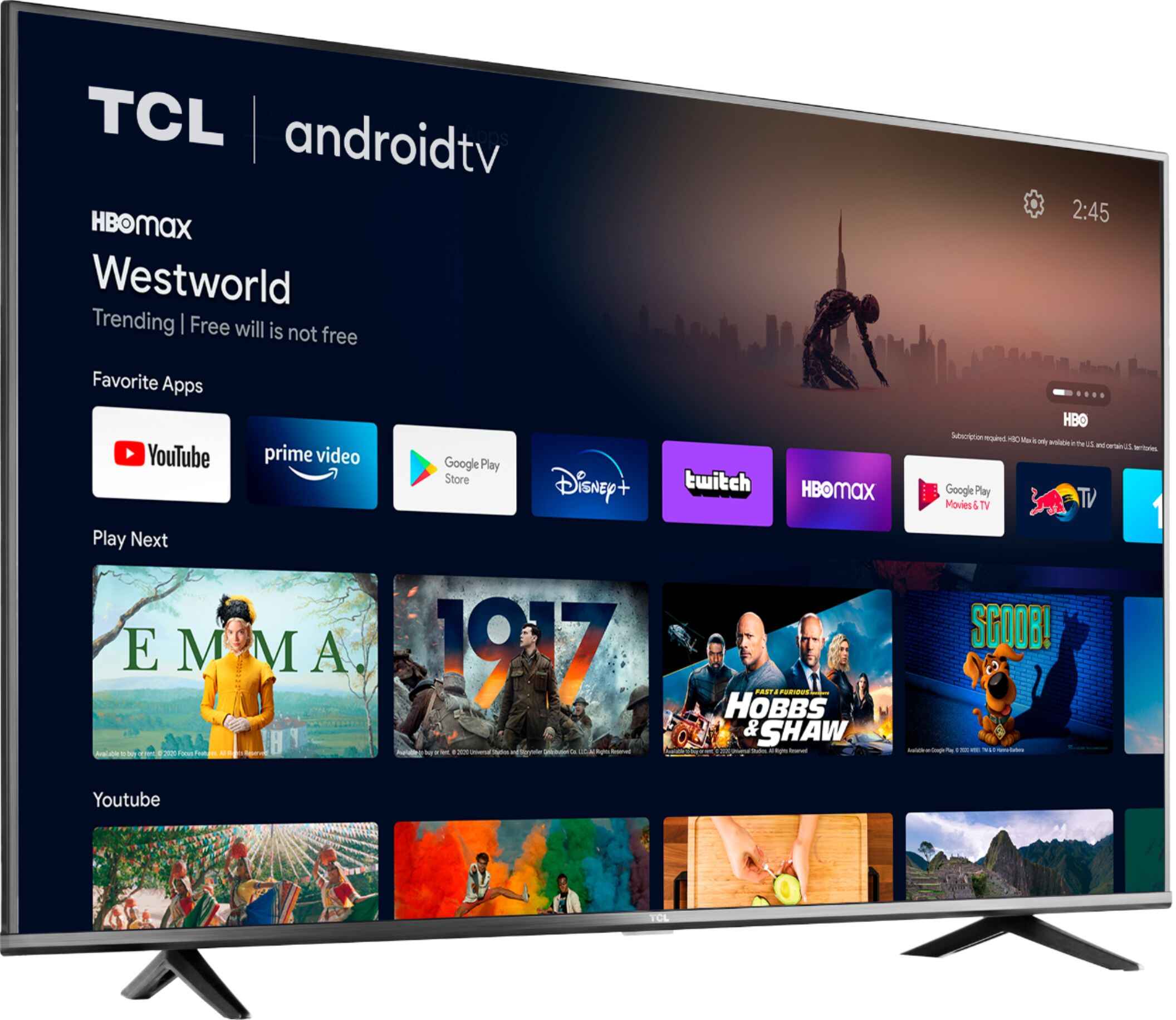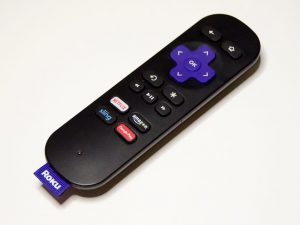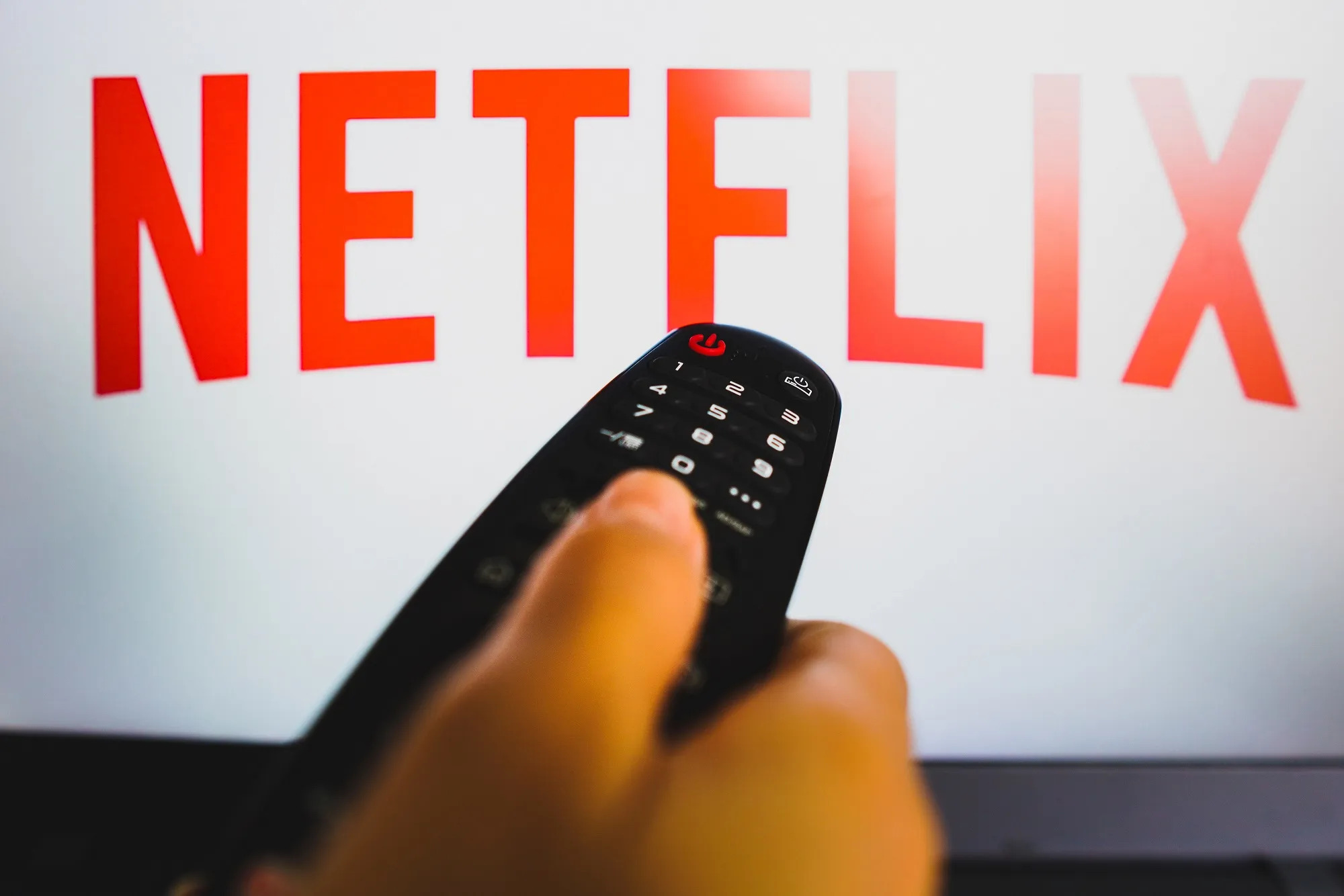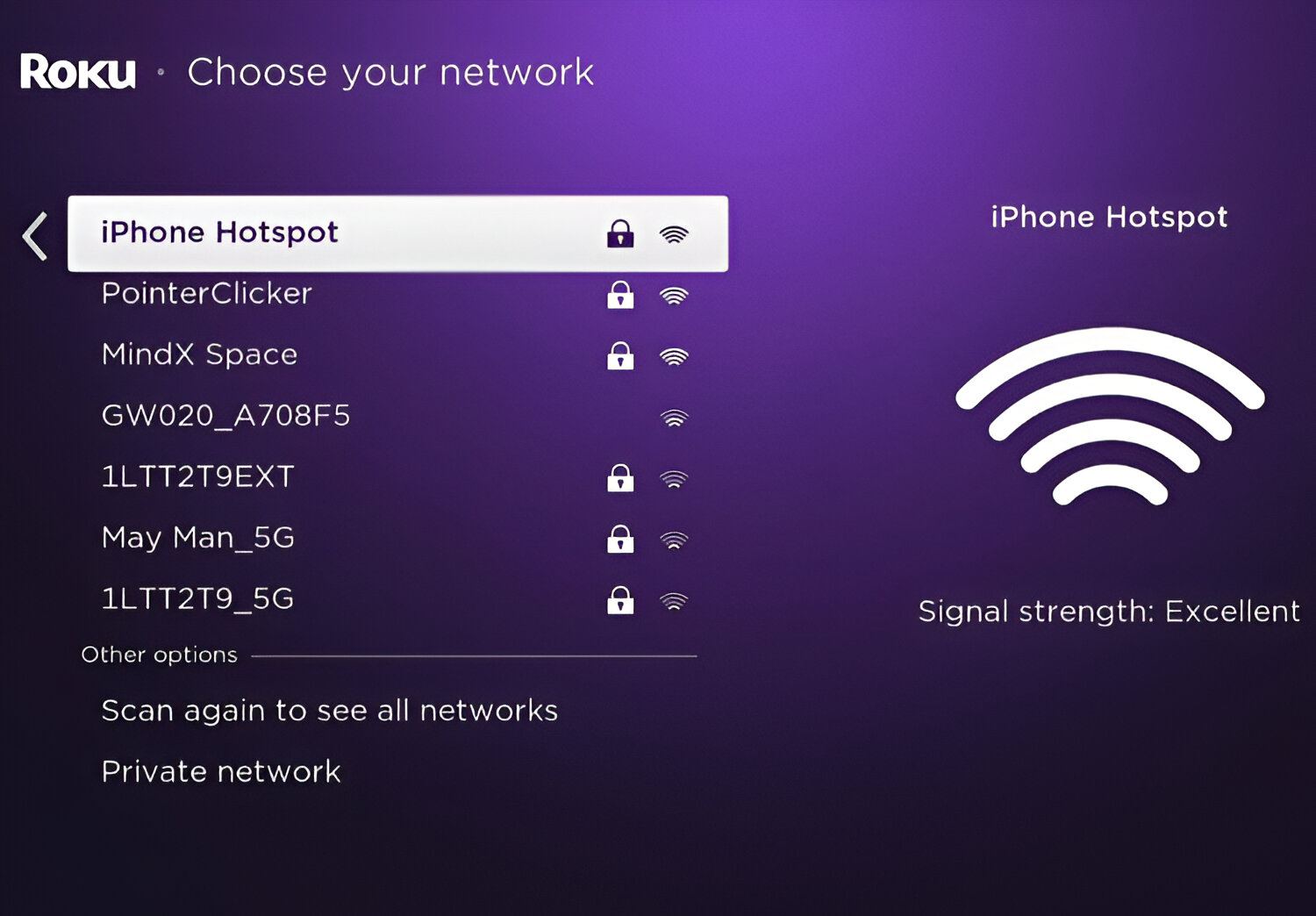Introduction
Welcome to this guide on how to fix common issues with your Roku TV. Roku TVs are popular for their user-friendly interface and wide range of streaming options. However, like any electronic device, they can encounter problems that may disrupt your viewing experience. In this article, we will explore various troubleshooting techniques to help you resolve these issues.
Before we dive into the specific troubleshooting steps, it’s important to understand that fixing your Roku TV may require some technical knowledge and patience. While many issues can be resolved with simple troubleshooting, there may be instances where professional assistance is needed. It’s always a good idea to consult Roku’s official support page or contact their customer service if you encounter any difficulties.
Throughout this guide, we will cover both common issues that arise with Roku TVs and some specific problems that you might come across. The common issues include problems such as the TV not turning on, audio/sound issues, remote control problems, and HDMI or video display issues. The specific problems we will address are related to apps or channels not working properly.
Whether you are experiencing one of these common issues or a specific problem, we will provide step-by-step solutions to help you troubleshoot and resolve the issue. It’s important to note that these solutions are general guidelines and may not apply to every situation. Feel free to adapt them as needed or seek professional assistance if required.
Now that you understand what we will cover in this guide, let’s move on to the troubleshooting steps for common issues with your Roku TV.
Troubleshooting Common Issues
If you are facing common issues with your Roku TV, there are several troubleshooting steps you can try before seeking professional help. These steps will help you resolve most common problems and get your TV back up and running smoothly.
1. Restarting the Roku TV
One of the simplest and most effective troubleshooting steps is to restart your Roku TV. This can help resolve minor software glitches and refresh the system. To restart your Roku TV, follow these steps:
- Press the Home button on your Roku remote.
- Navigate to the Settings menu and select System.
- Choose the System restart option and confirm your selection.
Wait for your Roku TV to restart and check if the issue has been resolved. Sometimes a simple restart can fix common issues such as frozen screens, slow performance, or unresponsive apps.
2. Checking the Connections
Another common cause of issues with Roku TVs is loose or faulty connections. Make sure all cables are securely connected to the appropriate ports on your TV and any connected devices such as cable boxes or game consoles. Additionally, ensure that the HDMI cables are properly inserted and not damaged.
If you are experiencing network connectivity issues, check if your Roku TV is connected to your Wi-Fi network. Go to the Settings menu, select Network, and ensure that your network connection is active and stable. If necessary, restart your router and reconnect your Roku TV to the Wi-Fi network.
3. Updating Roku Software
Outdated software can cause various issues with your Roku TV. It’s essential to keep your Roku software up to date to ensure optimal performance and compatibility with the latest apps and features. Follow these steps to check for software updates:
- Press the Home button on your Roku remote.
- Navigate to the Settings menu and select System.
- Select System update and choose Check now.
If an update is available, follow the prompts to download and install it. Once the update is complete, restart your Roku TV and check if the issue has been resolved.
4. Resetting Roku TV to Factory Settings
If you’ve tried the above steps and are still facing persistent issues, resetting your Roku TV to factory settings may be necessary. This will erase all settings and preferences, returning the TV to its original state. However, keep in mind that this will also remove any installed apps and login information.
To reset your Roku TV to factory settings, follow these steps:
- Press the Home button on your Roku remote.
- Navigate to the Settings menu and select System.
- Select Advanced system settings, then Factory reset.
- Follow the on-screen instructions to complete the reset process.
After the reset is complete, set up your Roku TV as you did when you initially purchased it. This includes connecting to your Wi-Fi, signing in to your Roku account, and reinstalling apps.
By following these troubleshooting steps, you should be able to resolve common issues with your Roku TV. However, if you continue to experience problems, proceed to the next section where we address some specific issues you may encounter.
Restarting the Roku TV
One of the simplest yet effective troubleshooting steps for resolving common issues with your Roku TV is to restart the device. Restarting can help clear temporary glitches, refresh the system, and restore normal functionality. Follow the steps below to restart your Roku TV:
- Locate the power button on your Roku TV or Roku remote.
- Press and hold the power button for a few seconds until the power options appear on the screen.
- Select the Restart or Reboot option and wait for your Roku TV to shut down.
- Once the TV turns off, wait for a few seconds, then press the power button again to turn it back on.
By performing a restart, you give your Roku TV a fresh start and allow it to clear any temporary issues or errors that may have occurred. This process can resolve various problems such as freezing, slow performance, or apps not working correctly.
If you’re experiencing issues with the Roku remote and restarting the TV using the remote isn’t possible, you can also try unplugging the TV from the power source, waiting for a few seconds, and then plugging it back in. This performs a similar function to restarting and can help resolve minor issues.
After the restart, check if the problem you were experiencing has been resolved. If not, you can move on to the next troubleshooting step.
It’s important to note that restarting the Roku TV is a basic troubleshooting step that can resolve many common issues. However, if you encounter more persistent problems, you may need to explore other troubleshooting methods or contact Roku’s customer support for further assistance.
Checking the Connections
Another common cause of issues with your Roku TV is loose or faulty connections. Checking and ensuring that all cables and cords are properly connected is an important troubleshooting step to eliminate connection-related problems. Follow the steps below to check the connections of your Roku TV:
- Inspect the power cable that connects your Roku TV to the power outlet. Make sure it is securely plugged into both the TV and the power source.
- Check the HDMI or other video input cables that connect your Roku TV to external devices such as a cable box, DVD player, or gaming console. Ensure that they are firmly plugged into both the TV and the respective devices. If any cables are loose or damaged, try using a different cable to see if that resolves the issue.
- If you are using a wireless network connection, ensure that your Roku TV is connected to your Wi-Fi network. Navigate to the Network settings in the Roku menu and verify that the Wi-Fi connection is active and stable. If necessary, restart your router and reconnect your Roku TV to the Wi-Fi network.
Loose or faulty connections can often result in inconsistent performance, audio-visual issues, or even complete loss of signal. By checking and securing all connections, you can rule out any potential problems related to cabling or network connectivity.
If you are experiencing issues with audio or video playback, it’s also worth checking if the input source on your TV is correctly set. Use the TV’s remote control or the buttons on the TV to navigate to the input/source selection menu and make sure it is set to the appropriate HDMI or video input where your Roku TV is connected.
Once you have checked and double-checked all the connections, restart your Roku TV to refresh the system and see if the issues have been resolved. If the problem persists, move on to the next troubleshooting step.
Remember, ensuring proper connections is crucial for optimal performance and functionality of your Roku TV. By taking the time to verify and secure all cables, you can eliminate any potential issues stemming from loose or faulty connections.
Updating Roku Software
Outdated software can often cause various issues and compatibility issues with your Roku TV. Updating your Roku software is an important troubleshooting step to ensure that your TV functions smoothly and seamlessly. Follow the steps below to check for software updates and keep your Roku TV up to date:
- Start by pressing the Home button on your Roku remote to navigate to the main menu.
- Scroll up or down to select the Settings option, represented by a gear icon, and press the OK button.
- In the Settings menu, scroll down and select the System option.
- Next, choose the System update option and select the “Check now” button to check for any available software updates.
- If a software update is available, your Roku TV will begin downloading it automatically. Wait for the download to complete.
- After the download is finished, the Roku TV will install the update. This process may take a few minutes.
- Once the update installation is complete, your Roku TV will automatically restart.
Updating your Roku software ensures that you have the latest features, bug fixes, and security patches. It can also resolve compatibility issues with certain apps or channels. Keeping your Roku TV updated can significantly improve its overall performance and functionality.
It is recommended to enable automatic software updates on your Roku TV to ensure that you receive future updates without manual intervention. This can be done in the System menu under the Software update option by selecting the “Auto-download” option.
After updating your Roku TV, check if the issues you were experiencing have been resolved. If the problem persists, proceed to the next troubleshooting step in this guide to further troubleshoot your Roku TV.
Remember, updating your Roku software is an essential step to ensure optimal performance and compatibility with the latest features. By keeping your Roku TV up to date, you can enjoy a seamless streaming experience and resolve any software-related issues that you may encounter.
Resetting Roku TV to Factory Settings
If you have tried the previous troubleshooting steps and are still experiencing persistent issues with your Roku TV, resetting it to the factory settings may be necessary. Resetting your Roku TV will erase all settings, preferences, and installed apps, essentially restoring it to its original state.
Please note that performing a factory reset should be considered as a last resort, as it will remove all personalized configurations and require you to set up your Roku TV from scratch. Here’s how you can perform a factory reset:
- Press the Home button on your Roku remote to go to the main menu.
- Scroll up or down to select the Settings option, represented by a gear icon, and press the OK button.
- In the Settings menu, scroll down and select the System option.
- Next, choose the Advanced system settings option and select Factory reset.
- Read the on-screen warning message, which will explain that this action will delete all data and return your Roku TV to its original factory settings.
- If you want to proceed with the factory reset, select Factory reset everything.
- Follow the on-screen instructions to confirm and initiate the factory reset process. This process may take a few minutes.
Once the factory reset is complete, your Roku TV will restart and prompt you to go through the initial setup process, similar to when you first purchased the TV. This includes connecting to your Wi-Fi network, signing in to your Roku account, and reinstalling apps.
A factory reset can be helpful if you are experiencing severe issues with your Roku TV that other troubleshooting steps have failed to resolve. It can eliminate any complex software or configuration-related problems that may be causing persistent issues.
However, before performing a factory reset, it’s recommended to backup any important data or settings that you may want to restore after the reset. Also, keep in mind that any installed apps or login information will be erased, so be prepared to reinstall and set up everything again.
After completing the factory reset, check if the issues you were facing have been resolved. If you continue experiencing difficulties, it’s advisable to reach out to Roku’s customer support or seek professional assistance to further troubleshoot your Roku TV.
Remember, performing a factory reset should only be done as a last resort when other troubleshooting steps have been exhausted. Always consider the potential consequences and make sure to back up any important data before proceeding with the reset.
Troubleshooting Specific Issues
In addition to the common issues mentioned earlier, you may come across specific problems while using your Roku TV. These issues are more targeted and may require different troubleshooting techniques. In this section, we will address some of these specific issues and provide guidance on how to resolve them.
1. No Audio or Sound Issues
If you are experiencing a lack of audio or sound issues with your Roku TV, there are a few troubleshooting steps you can take:
- Ensure that the volume on your Roku TV is not muted or set to a very low level. Use the volume buttons on the Roku remote or on the TV itself to adjust the volume.
- Check the audio settings on your Roku TV. Press the Home button on your Roku remote, go to Settings, select Audio, and make sure the correct audio output is selected.
- Examine the audio connections. If you are using external speakers or a soundbar, verify that they are properly connected to your Roku TV and powered on. Additionally, check the audio cables for any damage or loose connections.
- Try restarting your Roku TV, as mentioned earlier in the troubleshooting steps. Sometimes a simple restart can resolve sound-related issues.
2. Remote Control Problems
If you are facing issues with the remote control of your Roku TV, follow these troubleshooting steps:
- Check the batteries in the remote control. Ensure they are properly inserted and have sufficient power. It’s also a good idea to try replacing the batteries with fresh ones.
- Verify that the remote control is within the line of sight of the Roku TV and is in range. Obstacles between the remote control and the TV can interfere with the signal. Remove any obstructions and try again.
- Restart your Roku TV as mentioned earlier. Sometimes remote control issues can be resolved with a simple restart.
- If the problem persists, try pairing the remote control with your Roku TV again. Refer to the Roku TV manual or the official Roku support website for instructions on how to pair the remote control.
3. Issues with Apps or Channels
If you are having trouble with specific apps or channels on your Roku TV, consider the following troubleshooting steps:
- Check your internet connection. Poor connectivity can result in apps or channels not loading or buffering excessively. Ensure that your Roku TV is connected to a stable Wi-Fi network.
- Update the app or channel. Open the Roku Channel Store and go to the app or channel in question. If an update is available, select Update and allow Roku to install the latest version.
- Remove and reinstall the app or channel. Sometimes, uninstalling and reinstalling an app or channel can resolve any software-related issues. Go to the Home screen, navigate to the app or channel, press the * (star) button on your remote, and select Remove channel. Then, visit the Roku Channel Store and download the app or channel again.
- If the issue persists, reach out to the app or channel developer for further assistance. They may be able to provide specific troubleshooting steps or insights into any known issues with their app or channel.
4. HDMI or Video Display Problems
If you are encountering HDMI or video display problems with your Roku TV, follow these steps:
- Check the HDMI or other video cable connections. Ensure they are securely plugged into both the Roku TV and the external device. Consider trying a different cable to rule out any cable-related issues
- Verify that the correct input source is selected on your Roku TV. Use the TV’s remote control or buttons to navigate to the input/source selection menu and choose the correct HDMI or video input
- Try adjusting the display settings on your Roku TV. Press the Home button on your remote, go to Settings, select Display type, and choose the appropriate display resolution for your TV
- If you are using an AV receiver or soundbar between your Roku TV and the external device, check the HDMI connections and settings on those devices as well
If you have followed these troubleshooting steps and are still experiencing specific issues with your Roku TV, it is advisable to consult Roku’s official support page or contact their customer service for further assistance. They can provide personalized guidance based on your specific situation.
No Audio or Sound Issues
If you are experiencing no audio or sound issues with your Roku TV, it can be frustrating and disrupt your viewing experience. There are several troubleshooting steps you can take to resolve these issues:
- First, check if the volume on your Roku TV is muted or set to a very low level. Use the volume buttons on your Roku remote or the buttons on the TV itself to raise the volume.
- Next, navigate to the audio settings on your Roku TV. Press the Home button on your Roku remote, go to Settings, select Audio, and make sure the correct audio output is selected. Ensure that the volume mode is on and set to an appropriate level.
- If you are using external speakers or a soundbar, check all audio connections. Verify that they are securely connected to your Roku TV and powered on. Additionally, examine the audio cables for any damage or loose connections. Try connecting headphones to the Roku remote’s audio jack to test if you can hear audio through them.
- Restart your Roku TV by pressing the Home button on your remote, navigating to Settings, and selecting System. From there, choose System restart and confirm your selection. This can help refresh the system and resolve audio issues.
- Check for any software updates for your Roku TV. Outdated software can sometimes cause audio problems. Navigate to the Settings menu, select System, and choose System update. Select Check now to see if any updates are available. If so, proceed with the update.
After trying these troubleshooting steps, test the audio on your Roku TV to see if the issue has been resolved. If not, consult Roku’s official support page or contact their customer service for further assistance. They can provide more specific guidance based on your particular situation.
Remember, no audio or sound issues can be caused by various factors, ranging from simple settings to hardware problems. By following these troubleshooting steps, you can often identify and resolve the issue, allowing you to enjoy your Roku TV with clear and immersive audio once again.
Remote Control Problems
If you’re experiencing issues with the remote control of your Roku TV, it can be frustrating as it hinders your ability to navigate and control your TV effectively. Here are some troubleshooting steps to resolve remote control problems:
- Check the batteries in the remote control. Ensure they are properly inserted and have sufficient power. If the batteries are low or depleted, replace them with fresh ones.
- Make sure there are no obstructions between the remote control and the Roku TV. Objects or barriers can interfere with the signal transmission. Clear any obstructions and try again.
- Ensure that the remote control is within the range of the Roku TV. Keep in mind that the range can vary depending on the model of the remote control. Make sure you are pointing the remote control directly at the TV and try from different distances.
- If the remote control is not responding, perform a restart of your Roku TV. Simply unplug the TV from the power source, wait for a few seconds, and then plug it back in. This can sometimes resolve temporary glitches affecting the remote control.
- If the issue persists, try re-pairing the remote control with your Roku TV. Remove the batteries from the remote control and unplug the TV from power. Wait for about 10 seconds, then plug the TV back in and wait for it to fully restart. Insert the batteries into the remote control and press any button to pair it with the TV.
After trying these troubleshooting steps, check if the remote control issues have been resolved. If not, you may need to replace the remote control or consider using the Roku mobile app as an alternative remote control option.
Remember, remote control problems can occur due to a variety of reasons, including low battery power, signal interference, or issues with the remote control itself. By following these troubleshooting steps, you can often resolve these issues and regain control over your Roku TV.
Issues with Apps or Channels
If you’re experiencing issues with specific apps or channels on your Roku TV, it can be frustrating to miss out on your favorite content. Here are some troubleshooting steps to help resolve these issues:
- Check your internet connection. Poor connectivity can result in apps or channels not loading or buffering excessively. Ensure that your Roku TV is connected to a stable Wi-Fi network. You can also try resetting your internet router or contacting your internet service provider if you’re experiencing persistent connection issues.
- Update the app or channel. Open the Roku Channel Store and locate the app or channel giving you trouble. If an update is available, select “Update” and allow Roku to install the latest version. Sometimes, updates include bug fixes and performance improvements that can address issues.
- Remove and reinstall the app or channel. If the issue persists after updating, try removing the app or channel and reinstalling it. To do this, navigate to the channel on the Roku home screen, press the * (star) button on your remote, and select “Remove channel.” Then, go to the Roku Channel Store and download the app or channel again.
- Check for known issues. Visit the support website or social media accounts of the app or channel provider to see if there are any reported issues or outages. They may provide updates or troubleshooting steps specific to their service.
- If the problem persists, consider contacting the app or channel’s customer support. They may have additional troubleshooting steps or be able to provide further assistance to resolve the issue.
After following these troubleshooting steps, test the problematic app or channel to see if the issue has been resolved. If not, it may be worth reaching out to Roku’s customer support for further assistance, as they can provide guidance specific to your Roku TV model and the app or channel in question.
Remember, issues with apps or channels can occur due to various reasons, including connectivity problems, software bugs, or service-related issues. By following these troubleshooting steps and reaching out to the appropriate support channels, you can often resolve these issues and get back to enjoying your favorite content on your Roku TV.
HDMI or Video Display Problems
If you’re experiencing HDMI or video display problems with your Roku TV, it can impact your viewing experience and visual quality. Here are some troubleshooting steps to resolve these issues:
- Check the HDMI or other video cable connections. Ensure that the cables are securely plugged into both the Roku TV and the external device, such as a cable box or game console. Swap out the cables or try a different HDMI port on your TV to rule out any cable-related problems.
- Verify that the correct input source is selected on your Roku TV. Using either the remote control or the buttons on the TV, navigate to the input/source selection menu and choose the correct HDMI or video input corresponding to the connected device.
- Try adjusting the display settings on your Roku TV. Press the Home button on your remote, go to Settings, select Display type, and choose the appropriate display resolution that matches your TV’s capabilities. Test different resolutions to see if it improves the display quality.
- If you’re using an AV receiver or soundbar between your Roku TV and the external device, check the HDMI connections and settings on those devices. Ensure that they are properly connected and configured to pass the video signal correctly to your TV.
- If you’re experiencing video stuttering or pixelation, it could be a network bandwidth issue. Check your internet connection speed and consider upgrading your network plan or moving your Roku TV closer to your Wi-Fi router for a stronger signal.
After trying these troubleshooting steps, test the HDMI connection and video display on your Roku TV to see if the issues have been resolved. If not, consult Roku’s official support page or contact their customer service for further assistance. They can provide more specific guidance based on your particular situation and help troubleshoot any hardware or software-related problems.
Remember, HDMI or video display problems can occur due to various factors, such as loose connections, incorrect settings, or compatibility issues. By following these troubleshooting steps, you can often identify and resolve the issue, ensuring a smooth and high-quality viewing experience on your Roku TV.
Conclusion
In conclusion, troubleshooting common issues with your Roku TV can help resolve various problems that may arise during your usage. By following the steps outlined in this guide, you can often troubleshoot and fix issues related to restarting the TV, checking connections, updating software, and resetting to factory settings.
For specific issues like no audio or sound problems, remote control issues, issues with apps or channels, as well as HDMI or video display issues, targeted troubleshooting steps can be taken. These steps include checking settings, verifying connections, updating apps, and performing necessary restarts.
Remember to always ensure you have a stable internet connection, keep your Roku TV’s software up to date, and check for any known issues with specific apps or channels. Additionally, for hardware-related problems, contacting Roku’s customer support or seeking professional assistance might be necessary.
By employing these troubleshooting techniques, you can often resolve common issues without the need for additional help. However, if your problems persist or seem more complex, it’s always recommended to reach out to Roku’s support for personalized assistance and further guidance.
We hope that this guide has provided you with the knowledge and tools necessary to troubleshoot and fix common and specific issues with your Roku TV. Enjoy your seamless streaming experience!







